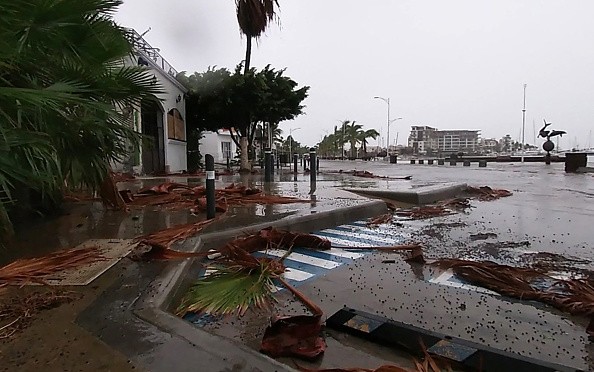The six-month hurricane season starts on Wednesday, and forecasts from NOAA (National Oceanographic and Atmospheric Administration), Colorado State University, and AccuWeather, an independent forecasting service, expect an above-average activity for the third year in a row.
The National Hurricane Center stated Monday that an area of low-pressure leftover from Hurricane Agatha in the Pacific had a 40% probability of forming in the southwestern Gulf of Mexico during the next five days, according to forecasters.
By midweek, it may have moved towards the northwest Caribbean, closer to Florida.
Hurricanes will be more frequent this year
 (Photo : JOEL COSIO/AFP via Getty Images)
(Photo : JOEL COSIO/AFP via Getty Images)

According to one analyst, Florida has the highest likelihood of being affected by a hurricane this year, with a 75% chance of being impacted, as per Yahoo news.
When you add in supply-chain difficulties like a well-publicized infant formula shortfall and a lumber deficit that might deprive South Floridians of the plywood they need to board up their homes and businesses, as well as the timber they need to rebuild after a hurricane, the season will begin in a bleak light.
However, NOAA has some new instruments in its toolkit, including a new drone and two lasers, that might assist forecast storms as well as tracking their route and intensity.
Combining them all is exciting to me because one of them is measuring moisture and temperature, and the others can provide us with some wind data and how the winds are changing in these critical parts of the storm, said Jason Dunion, director of NOAA's hurricane field program and a University of Miami researcher.
It's almost as though the potential to bring them all together is what makes this season so special.
NOAA also intends to fly a plane near the Cape Verde Islands, a site off Africa's west coast where researchers estimate that 80% to 85% of significant hurricanes originate.
Furthermore, the Loop Current, a warm water current that originates between Mexico's eastern Yucatan Peninsula and Cuba's west coast, flows north into the Gulf of Mexico, then southeast to the Florida Straits is already supplying the Gulf of Mexico and the Caribbean with unusually warm water further north than usual at this time of year.
And, as happened with Hurricane Ida last year, the water may become as hot as 86 degrees and stay that way up to 500 feet deep.
In comparison, water temperatures outside the Loop Current are around 78 degrees at 120 feet in depth.
Also Read: 1st Name on the List for 2022's Eastern Pacific Hurricane Season "Agatha"
Keeping up an eye for hurricane agatha
Agatha will travel over Mexico and diminish, according to Local 10 Meteorologist Luke Dorris.
What's left will be absorbed by a large region of unsettled weather in the southern Gulf of Mexico and the Western Caribbean.
In this complicated area of low pressure, a tropical disturbance has the potential to emerge.
Right now, we're simply keeping an eye on things to see what happens.
Until the middle of the week, we won't know much more.
The probable disturbance will be dragged northeast from the Gulf or Caribbean by an upper low over Florida that has given recent heavy rain to the area.
The question is whether this is simply an increase in moisture or a tropical disturbance.
There is still a lot of uncertainty because there isn't even a disruption yet. However, computer models indicated that the conditions for a major storm will be less than optimal.
If something does form, it will most likely be a hybrid system that is part tropical and part northern low. But, he added, it's too early to tell.
Related article: Hurricane Agatha Expected to Intensify After Making Landfall in Mexico
© 2024 NatureWorldNews.com All rights reserved. Do not reproduce without permission.





